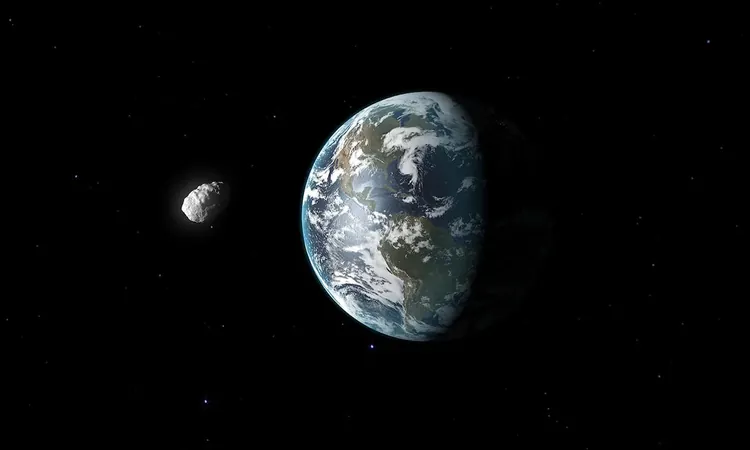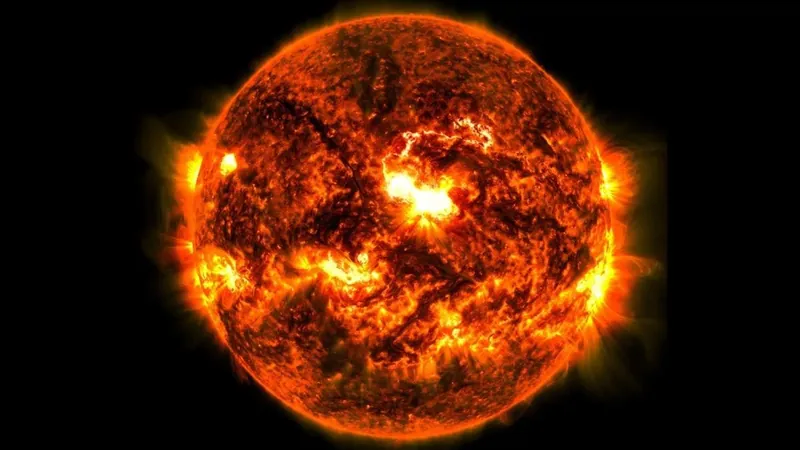
A Unique Visitor: Earth to Host a Temporary Mini Moon – What You Need to Know!
2024-09-27
Author: Rajesh
Introduction
In an astonishing event set to unfold soon, Earth is on the brink of welcoming a temporary mini moon named 2024 PT5. This small celestial body, reminiscent of a truck in size, is expected to orbit our planet for about two months, providing astronomers a rare opportunity to study a new transient resident in our cosmic neighborhood.
What is a Mini Moon?
So, what exactly is a mini moon? These fascinating objects, known as near-Earth objects (NEOs), are captured by Earth’s gravitational pull and move in an elliptical orbit around our planet. According to Peter Veres, an astronomer at the Harvard-Smithsonian Center for Astrophysics, the term "mini moon" was creatively coined by Robert Jedicke, a former mentor of Veres who works at the University of Hawaii’s Institute for Astronomy.
As per records, five mini moons have been confirmed to date. The first, named 2006 RH120, was comparable in size to a small car, accompanying Earth for four orbits from 2006 to 2007. Another notable visitor, 2020 CD3, lingered around our planet for nearly three years. Veres notes, "These objects experience chaotic orbits influenced by the Moon's gravitation and are eventually cast back into space." Some earlier objects like 1991 VG and 2022 NX1 didn’t last long enough to complete an orbit, leading to debates among scientists regarding their classification.
Discovery of 2024 PT5
2024 PT5, discovered in August 2024 by the ATLAS project at the Sutherland telescope in South Africa, is approximately 11 meters wide. ATLAS, led by co-director John Tonry from the University of Hawaii, is uniquely positioned with its globally distributed telescope system, allowing it to scan the skies continuously.
Following its discovery, the trajectory assessment of 2024 PT5 was entrusted to brothers Carlos and Raúl de la Fuente Marcos from Complutense University in Madrid. Their recent research, published by the American Astronomical Society, reveals that 2024 PT5 will loop around Earth from September 29 to November 25 before drifting back into the vastness of space.
Unraveling the Origins of 2024 PT5
The nature of 2024 PT5’s origins remains a puzzle. Carlos de la Fuente Marcos speculates that it belongs to a small group of asteroids known as the Arjunas, which follow a path similar to Earth's. These celestial rocks may originate from the main asteroid belt or come from lunar debris created during significant impacts. Evidence suggests a lunar source is the most plausible explanation for 2024 PT5.
Common Misconceptions about Moons and Space Junk
But are we alone with just one moon? The European Space Agency (ESA) asserts that there are approximately 170 million pieces of space junk larger than a millimeter circling our planet. While some might jokingly say we have "170 million moons," the formal definition of a moon is limited to naturally formed bodies. For instance, 3753 Cruithne, an asteroid discovered in 1986, was sensationalized as Earth’s second moon, although it actually orbits the Sun in a trajectory akin to that of our planet.
Despite their transient nature, mini moons frequently revisit Earth’s vicinity. De la Fuente Marcos explains, "Their temporary existence stems from the instability caused by various gravitational influences." Calculations predict that 2024 PT5 will return in 2055.
The Importance of Monitoring NEOs
Given the potential risks, monitoring the trajectories of NEOs is crucial, with projects like ATLAS and Pan-STARRS engaged in vigilant observation to predict any possible threats.
In stark contrast to other natural disasters, the risk of asteroid impacts is both rare and potentially deadly, according to Tonry, who emphasizes the importance of asteroid detection. "While the odds of a significant impact are low, the chances of dying from such an event are higher compared to a shark attack or plane crash," he warns. However, he also reassures that any impending collision could be predicted with precision, giving humanity time to prepare.
Future Technologies to Enhance Detection
Advanced systems like the soon-to-be-launched Vera C. Rubin Observatory and NASA’s NEOSM space telescope are set to enhance our ability to forecast potential space threats, aiming to prevent catastrophic events in the future.
Conclusion
With 2024 PT5 making its brief visit to our inner solar system, it reminds us of the wonders and dangers that linger in the vastness of space, just a stone's throw away. Stay tuned as we keep our eyes on the skies and report back on this mini moon's journey!


 Brasil (PT)
Brasil (PT)
 Canada (EN)
Canada (EN)
 Chile (ES)
Chile (ES)
 España (ES)
España (ES)
 France (FR)
France (FR)
 Hong Kong (EN)
Hong Kong (EN)
 Italia (IT)
Italia (IT)
 日本 (JA)
日本 (JA)
 Magyarország (HU)
Magyarország (HU)
 Norge (NO)
Norge (NO)
 Polska (PL)
Polska (PL)
 Schweiz (DE)
Schweiz (DE)
 Singapore (EN)
Singapore (EN)
 Sverige (SV)
Sverige (SV)
 Suomi (FI)
Suomi (FI)
 Türkiye (TR)
Türkiye (TR)